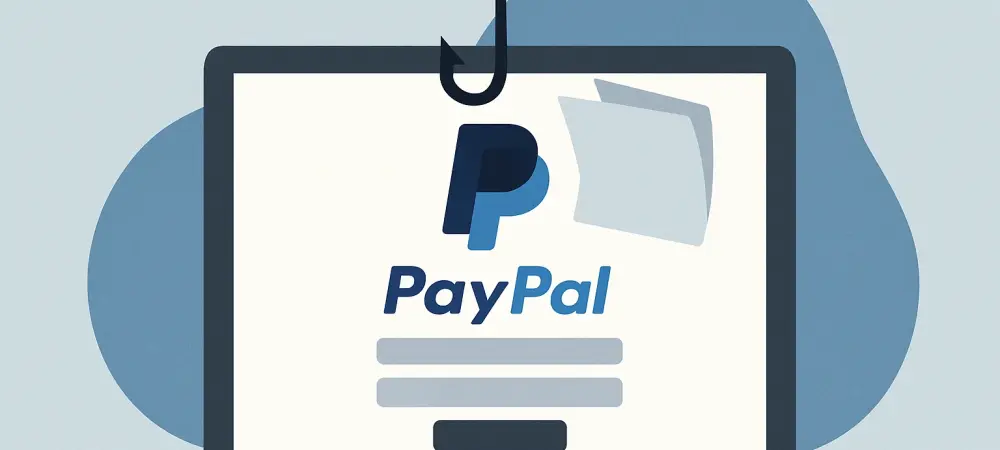In a world where digital transactions dominate, imagine opening your inbox to find an urgent message from PayPal claiming a $900 transaction needs immediate attention, and although the logo looks familiar and the formatting seems professional, something feels off. With phishing scams growing more cunning by the day, countless users fall prey to these deceptive emails, risking their financial security. This pervasive threat demands attention, as cybercriminals continue to exploit trust in well-known brands to harvest sensitive data.
Why This Scam Matters Now More Than Ever
The significance of this issue cannot be overstated, as PayPal remains a cornerstone of online payments for millions globally. Phishing emails targeting its users have surged, capitalizing on the platform’s widespread use to trick individuals into revealing login credentials. According to recent cybersecurity reports, these attacks have spiked by over 30% in the past two years, highlighting an urgent need for awareness and vigilance among digital consumers.
This scam’s impact extends beyond individual losses, shaking confidence in online financial systems. When attackers mimic legitimate correspondence with near-perfect precision, even cautious users can be deceived. The stakes are high, with stolen credentials often leading to unauthorized transactions or identity theft, making this a critical concern for anyone navigating the digital economy.
The Alarming Rise of PayPal Phishing Threats
Delving into the mechanics of these scams reveals why they pose such a formidable challenge. Email systems, by design, allow sender addresses to be spoofed, enabling fraudsters to craft messages that appear to originate from PayPal’s official channels. This vulnerability transforms a trusted communication tool into a gateway for deception, catching many off guard.
The tactics employed are increasingly sophisticated, often exploiting human psychology. Attackers create a sense of urgency, alleging unauthorized account activity or pending large payments, pushing recipients to act without a second thought. This manipulation of trust in a familiar brand underscores the growing danger, as these schemes adapt to evade detection by even updated security filters.
Telltale Signs of a Fraudulent PayPal Email
Spotting a fake email requires a keen eye for subtle inconsistencies that betray its malicious intent. One glaring red flag is the use of generic salutations like “Dear Customer” instead of a personalized greeting with the recipient’s name, a hallmark of mass phishing campaigns. Such impersonal language often signals that the sender lacks access to specific account details.
Another warning sign lies in subject lines that scream urgency, such as references to large, unverified transactions or account suspensions. For instance, a subject like “Set up your account profile” has been flagged in recent scam alerts as a lure to click on harmful links. Recognizing these patterns equips users to question the legitimacy of unexpected messages before taking action.
Additionally, unsolicited links embedded in the email are a dead giveaway. Legitimate companies rarely, if ever, include direct login prompts in their communications, preferring users to access accounts through official websites or apps. Hovering over these links—without clicking—often reveals suspicious URLs that deviate from PayPal’s domain, providing a crucial clue to avoid compromise.
Insights from Cybersecurity Experts on Phishing Dangers
Voices from the cybersecurity field shed light on the depth of this threat, emphasizing its deceptive artistry. Experts note that modern phishing emails replicate PayPal’s branding with startling accuracy, down to logos and color schemes, making differentiation a daunting task for the untrained eye. This precision is a deliberate tactic to lower defenses, as familiarity breeds trust.
Commentary from industry analysts highlights a broader trend: phishing is no longer a crude attempt but a polished operation. One specialist remarked, “These emails are crafted to bypass not just spam filters but human skepticism, exploiting even a moment’s lapse in judgment.” Such insights underline the necessity of staying informed about evolving scam techniques to counter their effectiveness.
Real-world stories further illustrate the human cost of these attacks. Reports describe users who, believing an email to be genuine, entered credentials on a fake page, only to lose access to their accounts within hours. These accounts serve as stark reminders that vigilance is not optional but essential in an era of rampant digital fraud.
Arm Yourself: Steps to Dodge PayPal Email Scams
Taking proactive measures is the strongest defense against falling victim to these schemes. A fundamental rule is to never click on links in unsolicited emails, regardless of how authentic they appear. Instead, navigate directly to PayPal’s official website or mobile app to verify any account alerts or issues, ensuring a secure interaction.
Another vital step involves maintaining robust password hygiene. If there’s even a slight suspicion that credentials might have been exposed, updating passwords immediately—using strong, unique combinations—can prevent unauthorized access. Enabling two-factor authentication adds an extra layer of protection, making it harder for attackers to breach accounts.
Finally, adopting a mindset of skepticism toward unexpected communications is key. Deleting suspicious emails without engaging with their content minimizes risk, while reporting them to PayPal’s fraud team can help track and mitigate these threats. Staying cautious and informed remains the most effective shield against the cunning ploys of cybercriminals.
Reflecting on a Safer Digital Path
Looking back, the battle against PayPal email scams revealed how trust in digital platforms was weaponized by fraudsters with alarming precision. The stories of those who narrowly escaped—or sadly didn’t—served as powerful lessons in the importance of scrutiny over convenience. Each deceptive email uncovered became a reminder of the ever-present need for caution.
Moving forward, users were encouraged to prioritize direct access to their accounts over reacting to urgent messages, a practice that thwarted countless phishing attempts. Equipping oneself with knowledge of red flags, from generic greetings to rogue links, proved invaluable. As digital threats evolve, fostering a habit of verification and leveraging security tools stood out as the cornerstone of personal safety in an interconnected world.

